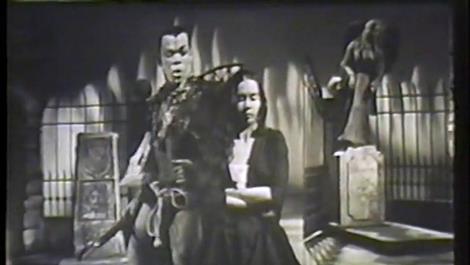By Walter Rutledge
![]()
The Batsheva Dance Company presented the New York premiere of Venezuela by house choreographer Ohad Naharin on March 27 through March 30 at the Brooklyn Academy of Music Howard Gillman Opera House. The program notes described the work as, “exploring the dialogue and conflict between movement and the content it represents”. As the work began the most compelling observation became that Venezuela is an experiment in perception.
The curtain rose without the usual dramatic fanfare of dimming the lights to darkness. This action caught the audience off guard silencing them with a heightened sense of curiosity. Eight dancers were standing downstage center and began a slow migration to center stage as the house lights slowly dimmed. The soft and soothing music for the entire first act of Maxim Waratt soundtrack consisted of a series Gregorian chants; and the combination of music and the upstage movement progression created an aura of mystery.
Naharin immediately establishes the work’s most notable elements; that of slow, sustained and repetitive movement phrases. Employing these choreographic devises allows the audience to absorb the movement and intent, and to remember and eventually recall the stunning visual imagery. A factor that will become important for interpreting the second act of Venezuela.
![]()
The upstage progression is interrupted by a solo female dancer extending an arm. The gesture, with an upwardly extended arm, flexed wrist and stylized fingers, conjured Latin social dancing. A male dance extends his arm in a lower second position as if in response to the initial gesture. Soon all the dancers are engaged in a Naharin style Latin ballroom dance. The choreography seemed to work in an odd sort of tandem with the music, but it clearly established a dynamic counterpoint.
Good choreography goes beyond the steps and music, it establishes its own timing to create a visual music. Throughout the first act Naharin capitalized on this fact delivering cohesive sections of both visual and audio contrast. This was most evident in the section where the dancers rapped the lyrics from Dead Wrong, a rap song by Biggie Smalls aka the Notorious B.I.G. featuring additional rap lyrics from Eminem. Set against the Gregorian chant the effect was almost as shocking as finding a lifted toilet bowl seat in a nunnery.
![]()
As the lights rose again on the second act the dancers again moved to center stage restarting the work from the beginning. The chant had been replaced by an eclectic score that kept the “Latin section” exciting- just more traditional. The same happened with the Biggie Small section with the rap set back to the original Al Green baseline sample; just as edgy but more contextually conventional.
![]()
Naharin masterfully variated and developed themes with nuanced discipline; which allowed changes in the environment (music, lighting, props and cast) to alter the visual perception of the choreography. In one such moment the dancers entered with rectangular shaped fabric. In the first section oatmeal colored rectangles slapped the floor as a solo dancer, crawled prostrate on the floor, seemingly tried to avoid the blows. The imagery creating a sense of penance. In the second rendition the rectangles were painted to represent national flags including the Palestinian, Brazilian and the Black Power (USA) flag. This time the “fabric flogging” took on social and politic overtones.
![]()
In another section five men walked on all fours with a woman straddling their backs. The long-sustained section created a mood of female dominance. In contrast, the imagery in the second act rendering set to Middle eastern inspired music transformed the section into a caravan.
![]()
The use of repetitive and sustained movement allowed the audience to retain the shapes and phrases. This made the second rendition an experiment in visual perception, instead of just a movement addendum. The strong musicality, which was so independent and prominent in the first act, was perfectly married to the music the proceeding act; leading us to surmise that Naharin probably choreographed the second rendering first.
A yell from company member Bobby Jene Smith signals the end of both acts. Maybe it was a metaphor, not signaling the end but announcing a new beginning. Ohad Naharin’s Venezuela makes a powerful artistic statement allowing us to see his world from two points of view. Both valid and both compelling.
